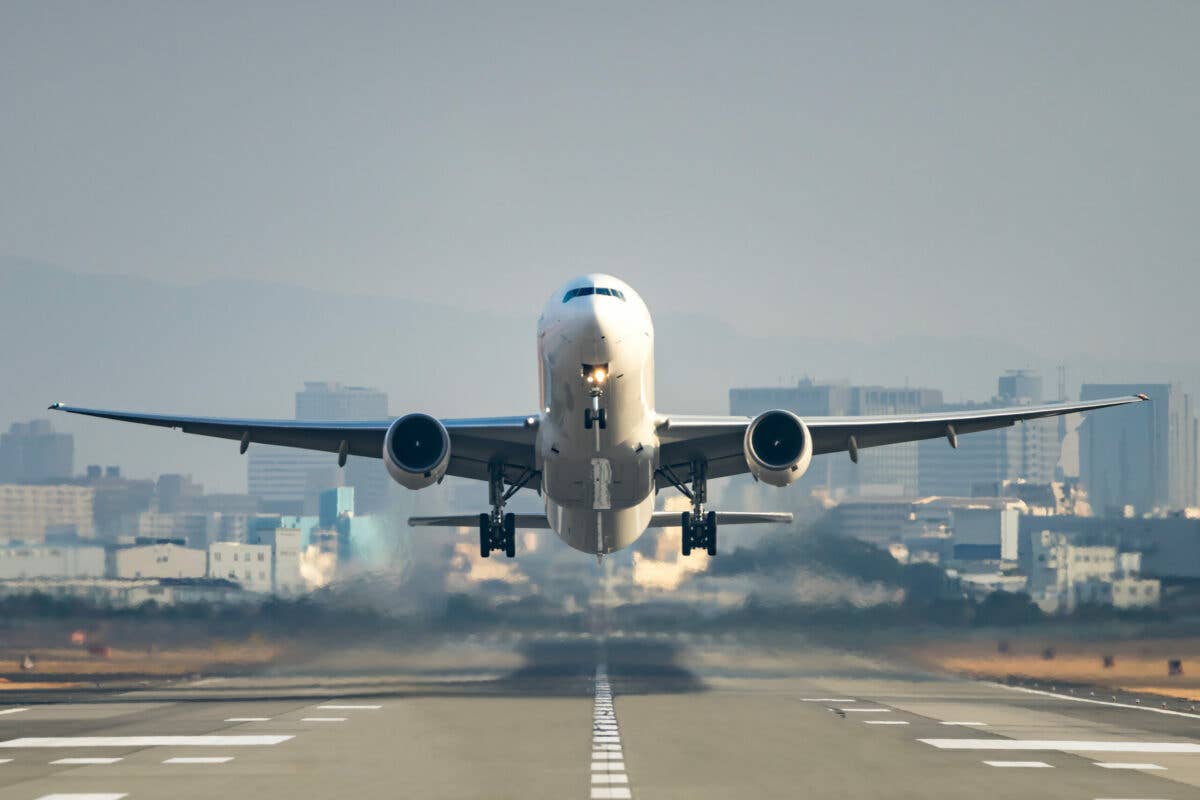House Introduces Bipartisan FAA Reauthorization Bill
The nearly 800-page piece of legislation calls for $100 billion in funding for the agency and airports through 2028.

House Transportation Committee leadership the proposal is aimed at keeping the U.S. the “gold standard” of aviation safety. [Credit: Shutterstock]
The U.S. House Transportation and Infrastructure Committee and aviation subcommittee has introduced the Securing Growth and Robust Leadership in American Aviation Act—bipartisan legislation to reauthorize the FAA for the next five years.
Over the last few months, the committee has conducted several hearings on aviation topics, inviting congressional leaders and aviation stakeholders to participate in discussions before moving forward with a comprehensive bill on Friday.
Transportation and Infrastructure Chairman Sam Graves (R-Mo.) noted the proposal is aimed at keeping the U.S. the “gold standard” of aviation safety and innovation at a time when that notion is being threatened.
Graves was alluding to the numerous challenges the aviation sector has faced in recent months, including a Notice to Air Missions (NOTAM) shutdown, outdated technology, staffing shortages, and several concerning near misses at U.S. airports.
“Our bipartisan legislation will improve critical infrastructure for airports of all sizes, streamline the FAA bureaucracy, strengthen the nation’s general aviation sector, encourage the more rapid deployment of safe technological innovations, and address workforce challenges throughout the aviation system,” Graves said. “Not only does this legislation provide long-term stability and funding for the FAA, it also authorizes the important safety work of the National Transportation Safety Board [NTSB].”
The nearly 800-page package calls for $100 billion in funding for the FAA and airports until 2028. It addresses key topics, such as FAA reforms, workforce development, airport infrastructure, and aviation safety, among others.
The bill also includes an entire provision dedicated to general aviation—a first in reauthorization history. The GA portion includes measures such as expanding BasicMed, protecting GA airports from closure, and additional ADS-B rebate incentives.
Other key parts of the bill tackle improving FAA efficiency and operations to streamline the regulatory process. The agency’s lack of resources and delays when it comes to certification and aircraft registration have long been sources of contention for the business and GA community. The legislation would seek to modernize and digitalize FAA forms and processes to eliminate backlogs, along with appointing new leadership positions within the agency. The measure proposes a second deputy FAA administrator to focus on operational safety.
“The House reauthorization measure offers a clear road map toward a more focused, more responsive, and more innovative FAA for all stakeholders,” National Business Aviation Association president and CEO Ed Bolen said in a statement.
The legislation also makes provisions for growing the worker pipeline by removing barriers to pursuing aviation careers and improving training standards.
BVLOS Rules
The bill zeroes in on aerospace innovation with the integration of new technologies, such as drones and advanced air mobility (AAM), into the national airspace. The legislation calls for the FAA to outline rules for beyond-visual-line-of-sight (BVLOS) operations for drones and asks the agency to propose regulations establishing procedures for operating powered-lift aircraft.
One of the more controversial aspects of the bill is the proposal for 25-hour cockpit voice recorders (CVR) and the installation of crash-proof video recorders in the cockpit. Under the provision, airlines would have seven years to install the devices within their fleets, while the FAA would have three years to establish requirements for them. The move to video recorders and 25-hour CVRs is something the NTSB has long advocated for in order to attain greater insights following aircraft accidents.
What’s not included in the legislation is any mention of increasing the pilot retirement age to 67—an issue that frequently came up during hearings as some lawmakers suggested it would increase the number of pilots in the workforce.
The House is expected to hash out the legislation during hearings this week as the Senate Committee on Commerce, Science and Transportation works on drafting its own version of the bill, with a hearing expected Thursday. Congress has until September 30 to pass the legislation before the current reauthorization expires.

Subscribe to Our Newsletter
Get the latest FLYING stories delivered directly to your inbox






